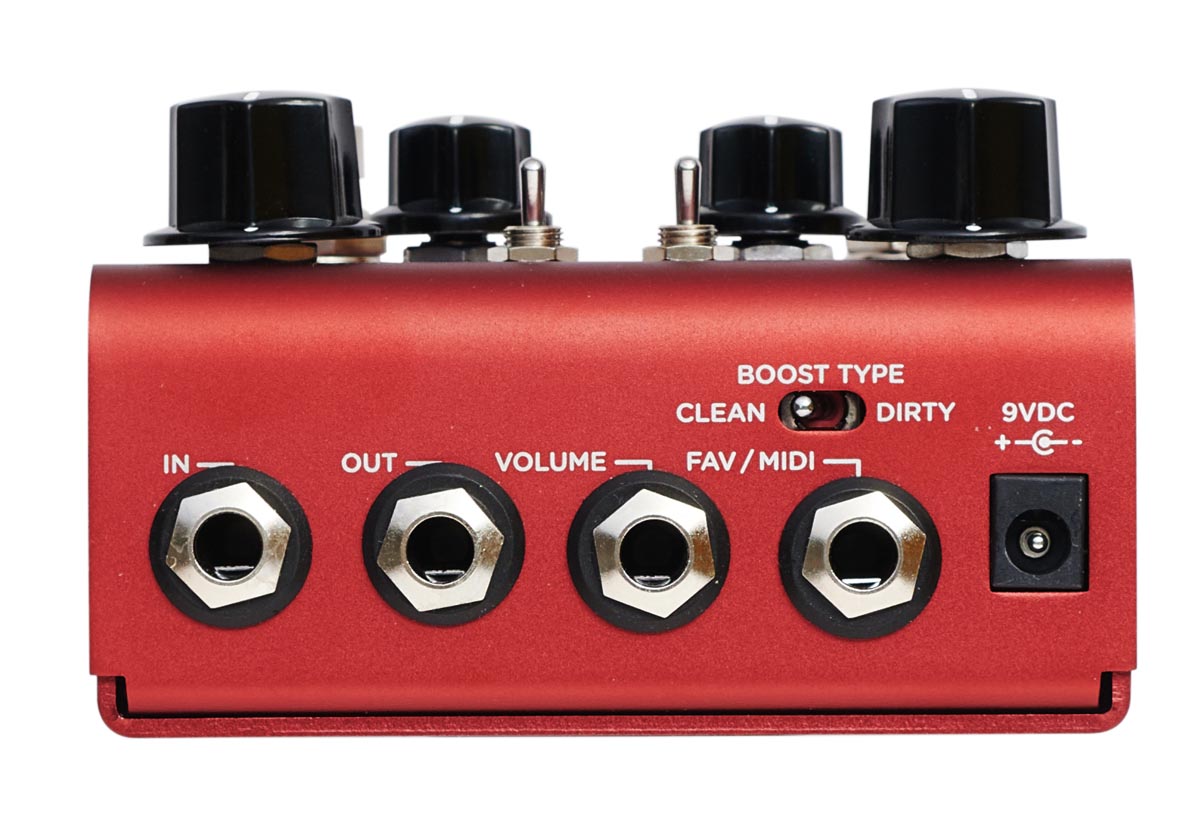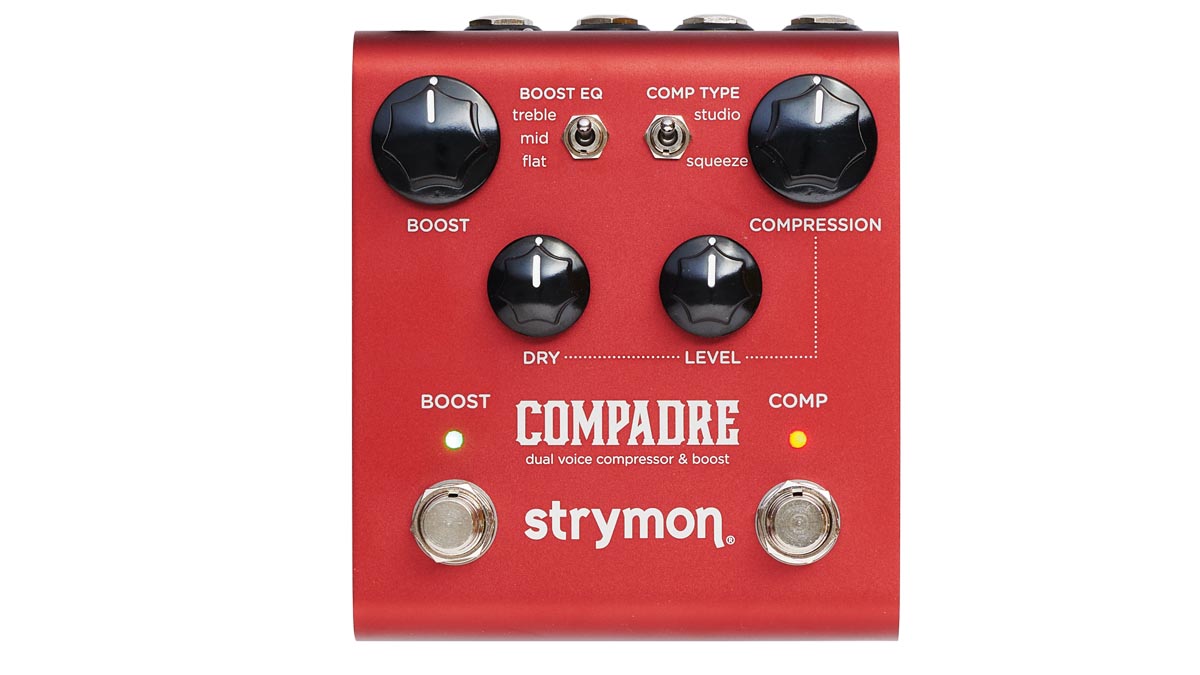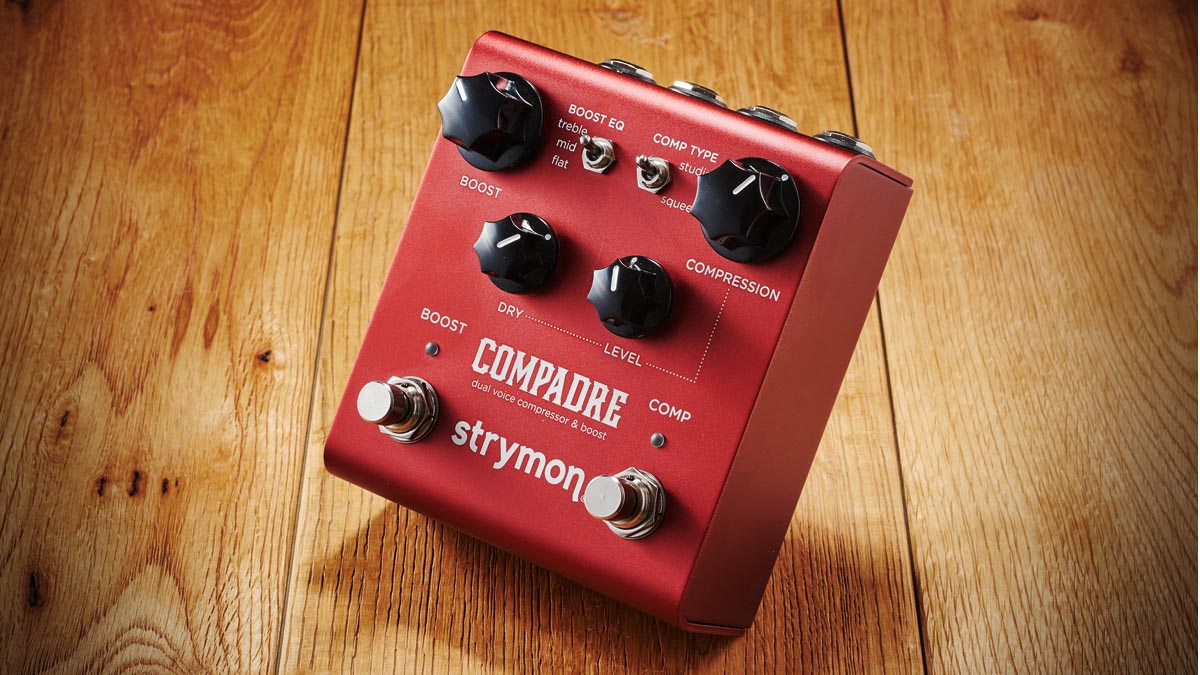Guitar World Verdict
The Compadre shows real grown-up thinking with a practicality that could see it become the pedalboard essential in your rig.
Pros
- +
Three boosts and two types of compression.
- +
The dry blend control is typical of its practical design.
- +
Small footprint for a twin-footswitch pedal.
- +
Input for expression pedal volume control.
- +
You can have presets.
Cons
- -
Nothing.
You can trust Guitar World
If you want a range of practical tonal options without getting too far removed from its core sound, there are two pedals that you can put before your amp – compression and boost that'll do the job.
Digitally controlled, with fully analogue audio signal processing, Strymon’s new Compadre offers this very combination, delivering separately footswitchable boost and compression sections that helpfully can be used independently or together.
- Tame your wild side with the best compressor pedals...
- Feed your tone sugar and caffeine with the best boost pedals
- Organise your pedal collection with the best pedalboards
- Tired of plugging in a million things? Check out the best power supplies
The VCA-based compression section provides two different compressors, with one offering a vintage studio rack style of compression and the other ideal for the tight squeeze from classic stompbox formats. Meanwhile, the Boost section has no shortage of options for tweaking its frequency range.
The Compadre has a facility for volume control that can be accessed by plugging an expression pedal into the dedicated rear-panel socket. This gives you perfect control over your volume and none of the the tonal degradation that be a risk when using some volume pedals.
Sounds
There’s nothing complicated about the compressor. It comes first in the signal chain, and simply choose your mode (Studio or Squeeze) the large knob will let you dial in how much compression you want – which it does by lowering the threshold above which compression occurs.
The Level knob works as you would expect, adjusting the pedal’s output when the compressor is engaged. It can cut or boost the level by up to 6dB. The Dry knob mixes your dry signal in with the compressed and is fast becoming a must-have option on compressor pedals.

If it's transparent subtlety you are after, choose the Studio. It's for those occasions when you are not looking to use compression as an obvious effect.
If you mix in some dry sound to retain the natural feel of your note attack, you can keep your sound consistent, adding smoothly decaying sustain without being overly obvious. This is a classy tool for tone strengthening and conditioning. It doesn’t jump right out at you but you would certainly miss it if it wasn't there.
The Squeeze mode is also capable of subtlety and can even out your sound and enhance sustain, but it goes further into compression as an effect. There is an obvious clamping down on note transients that is just perfect for country players doing some chicken pickin’ and pedal-steel-style bends.
The Mid setting accentuates midrange frequencies and fattens up your tone. It is an excellent tool for dialling in a richer drive sound from an amp that’s already cooking
The Boost offers a generous maximum 14dB of boost with its EQ set flat. It has plenty of full-range amp-driving capability, delivering straight volume boosts. But the flexibility from extra EQ options is great.
Pushing upper mid and high frequencies and tightening up the bottom-end, the Treble setting is pitched in classic treble booster territory. The Mid setting accentuates midrange frequencies and fattens up your tone. It is an excellent tool for dialling in a richer drive sound from an amp that’s already cooking.
Switch the boost to Dirt mode if you yearn for something a little grittier. There's a rear-panel switch dedicated to switching between the clean boost and a soft clipping boost circuit. With Dirt engaged, the boost is conspicuously Tube Screamer-like in the Mid setting.

Strymon’s Compadre is nicely responsive to you touch. It feels very natural to play through, offering many options for how you might want to switch in the different sections when needed. It allows you to set up a sound that suits you with the intention of leaving it inline. Both the boost and compression sections mesh together extremely well. Together, they create a front-end that brings the very best out of your amp.
While the Compadre is a piece of cake to use – pretty much WYSIWYG, just tweak knobs as necessary – there are presets on offer if you don't mind connecting up some external gear to access them. Simply save the settings of all the pedal’s knobs and toggle switches, including the rear Boost Type switch, plus the bypass state of both Boost and Compressor.
As with other in the Strymon lineup, you can store a Favorite setting that can be accessed by connecting a Strymon MiniSwitch or another external latching footswitch.
If you need more functionality, Strymon’s MultiSwitch Plus three-button footswitch is an excellent option, offering you access to three presets. But should you go down the MIDI route, you can not only access a full 300 presets but remotely control patch parameters, too.
Specs
- PRICE: $/£299
- ORIGIN: USA
- TYPE: Compressor and boost pedal
- FEATURES: Selectable true or buffered bypass, Class A JFET input circuit, 300 presets, MIDI control
- CONTROLS: Boost, Compression, Dry, Level, Boost EQ selector switch, Comp Type selector switch, Boost Type selector switch, Boost footswitch, Comp footswitch
- CONNECTIONS: Standard input, standard output, Volume,
- FAV/MIDI POWER: Supplied 9V DC adaptor, 150mA
- DIMENSIONS: 102 (w) x 114 (d) x 44mm (h)
- CONTACT: Strymon
Trevor Curwen has played guitar for several decades – he's also mimed it on the UK's Top of the Pops. Much of his working life, though, has been spent behind the mixing desk, during which time he has built up a solid collection of the guitars, amps and pedals needed to cover just about any studio session. He writes pedal reviews for Guitarist and has contributed to Total Guitar, MusicRadar and Future Music among others.
“Sonically excellent… we found that it could be a viable substitute for our vintage 1970s pedals”: Hamstead x That Pedal Show Redwing Analogue Stereo Modulator review
“The original Jordan Boss Tone was probably used by four out of five garage bands in the late ’60s”: Unpacking the gnarly magic of the Jordan Boss Tone – an actual guitar plug-in that delivers Dan Auerbach-approved fuzz












